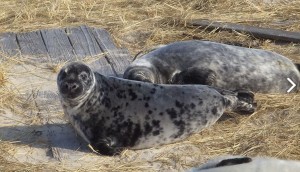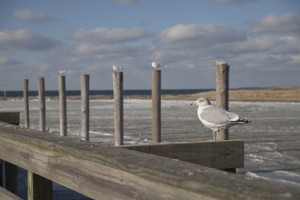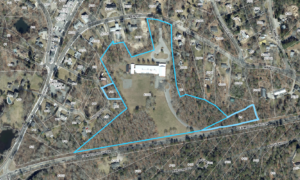
COURTESY OF NOAA FISHERIES/KIMBERLY MURRAY
Gray seal pups on Muskeget island. In January, NOAA scientists and external partners are studying gray seal populations at their breeding sites in Maine and Massachusetts.
WOODS HOLE – Scientists are trying to find out how many grey seals are in Northeastern waters and are using one of last Christmas’s most popular gifts to collect data.
National Oceanic and Atmospheric Administration researchers used drones in January to study weaned grey seals on the Monomoy National Wildlife Refuge and Muskeget Island off Nantucket, which is the largest grey seal breeding colony in the country.
The images will help document the number of pups and their distribution, along with documenting adult seals to provide data on brand marks or entanglements.
“We are using two types of unmanned aircraft systems, a fixed wing system and a hexacopter, to take images of the populations, along with traditional aerial surveys using two different camera angles on the NOAA Twin Otter aircraft,” said Kimberly Murray, the coordinator of the seal research program at NOAA’s Northeast Fisheries Science Center laboratory in Woods Hole. “This approach provides four different views of the animals and should help us get a better estimate of grey seal abundance on the island and where the animals are in the pupping season process.”
Murray said it will also allow NOAA to evaluate the pros and cons of various technologies available to survey wildlife populations.
Researchers are also expanding health studies this year by focusing on the seals at Monomoy.
Massachusetts Institute of Technology researchers are conducting long-term studies of the influenza A virus in grey seals to understand how common it is in the population and if it could affect other wildlife populations.
Scientists are looking to recapture and take samples of seals tagged within the season throughout 2016 to learn more about the virus progression and transmission.
Similar studies were performed in January of 2015 on both islands when researchers captured, tagged, sampled and released 126 weaned grey seal pups.
























Speak Your Mind